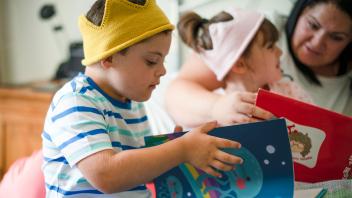There’s always a lot going in the Nation’s Capital but this week was particularly special. The 50th anniversary of the landmark 1963 March on Washington was celebrated, commemorated, discussed, reviewed and dissected in all media all week long.
It’s difficult for younger children to relate to the huge crowds of people gathered much less their very adult talking — particularly when this historical event is from a time that is even precedes their parents. Who was Martin Luther King, Jr., really?
Martin Luther King III introduces what it was like to grow up with a famous father in My Daddy, Dr. Martin Luther King, Jr. (Amistad). It wasn’t always easy, but young Marty grew to better understand his father’s actions — and what was said about him (and it wasn’t always positive) — and went on to share that with his siblings. Realistic illustrations by award-winning AG Ford and a straightforward telling bring MLK Jr. the icon into focus as a family man as well as a leader.
Andrea Pinkney’s words and Brian Pinkney’s illustrations swoop and swirl to bring Martin & Mahalia: His Words, Her Song (Little Brown) off the pages of a book for a more sophisticated view of how and where their talents intersected. Though they started out similarly, Martin’s words and Mahalia’s songs were completely entwined on August 29, 1963 at the Lincoln Memorial during the March on Washington for Jobs and Freedom. The addition of further resources (including a select discography) and a timeline allows this book to grow with readers.
These books and others capture moments in time from more personal perspectives helping younger children understand that famous people — like Martin Luther King, Jr. — were real people with real families and real feelings; that history begins with one person — and surely, a child reading a book today will become a leader of tomorrow.
About the Author
Reading Rockets’ children’s literature expert, Maria Salvadore, brings you into her world as she explores the best ways to use kids’ books both inside — and outside — of the classroom.

